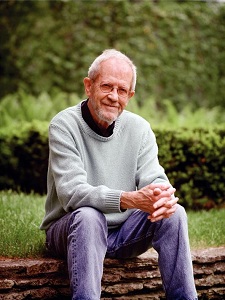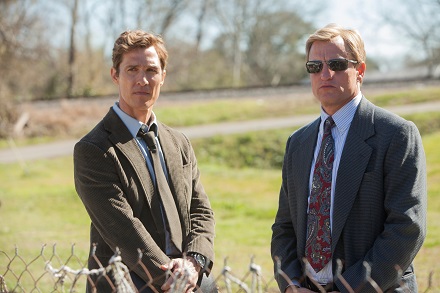
Robin Thicke sings about blurring the lines, but mystery writers have been doing that for years.
The myriad categories of crime fiction have increasingly been melding. And that is good news for readers as it means stories that are deeper, richer, and more realistic.
Police procedurals blend with character studies. Legal thrillers are quasi private detective tales. Science fiction evolves into police procedurals for a look at futuristic cops.
Jennifer McMahon has been added touches of the gothic in her plots for several novels. Her 2013 best-seller The One I Left Behind was a gripping psychological thriller about the affects of childhood trauma with a touch of the gothic to make the story even more fascinating.
McMahon goes a step further with her latest novel The Winter People.
In this novel, McMahon doesn’t just add a touch of the gothic – she embraces it full throttle. Here's my review.
In The Winter People, a string of disappearances in a small Vermont town date back to 1908 when a grisly murder and the death of a child changed the town.
The Winter People is equally a mystery as well as a ghost story—a chilling tale no matter what the genre.
McMahon currently is on tour for The Winter People, her first hardcover novel after a string of best-selling paperback originals. She’ll also be at SleuthFest this week.

Ideas for novels can come from so many sources. Sometimes a newspaper clipping, a phrase in a novel or even a conversation overheard in an airport lounge can spark that imagination.
J.A. Jance, currently on tour for her latest Ali Reynolds’ novel Moving Target, has used conversations with friends, a cruise and an art exhibit about domestic abuse for her inspiration. Second Watch, her last novel about Seattle investigator J.P. Beaumont, was tribute to a high school friend.
James Grippando uses the 2010 Deepwater Horizon oil spill that affected the Gulf Coast a couple of years ago for his latest thrill Black Horizon.
Michael Connelly used a crime that took place on his first day as a reporter for the L.A. Times as a springboard for Black Echo, his first Harry Bosch.
Laura Lippman used a real incident in Baltimore history for latest stand-alone After I’m Gone.
In this enthralling novel, Baltimore gambler Felix Brewer’s disappearance forever affects the lives of the wife, three daughters, and mistress he leaves behind. In Lippman’s fictional version, a murder also happens.
Lippman’s novel has been garnering universally positive reviews, including from me.
After I’m Gone is based on a piece of Baltimore history. During the 1970s, Baltimore kingpin Julius Salsbury jumped bail while on appeal for a gambling conviction. Salsbury, who has never been captured, also left behind a wife, three daughters and a mistress.
Lippman will be the subject of a profile in the next issue of Mystery Scene.
Currently, she is on tour for After I’m Gone. She’ll be in South Florida this week—details here. And she will be one of the guests of honor at SleuthFest this week.

I had to miss the launch of the fifth season of the FX series Justified, but you can be sure that I have since caught up and am again riveted to the adventures of Raylan Givens (played by Timothy Olyphant) and Boyd Crowder (Walton Goggins), and the rest of the Kentucky lawmen and outlaws.
It’s going to be another great season.
But what I missed by not seeing Justified in real time was the brief tribute to the late novelist Elmore Leonard, whose short story, "Fire in the Hole," inspired the series.
The 90-second tribute was part of a longer piece that will eventually be part of the Season 5 DVD and include interviews with cast members and others who worked with Leonard, plus readings from his novels.
Justified is so very much in keeping with Leonard’s novels—stories with crisp dialogue, a blurring between the good guys and bad guys and a sense that these are real people that we are ease dropping on.

Leonard had many fans among those who worked on Justified, including series creator Graham Yost. The Detroit Free Press wrote last week that Yost made “WWED (What Would Elmore Do) the guidepost for the writers."
In the same interview, the newspaper quoted Yost, “There's an old saw that you should never meet your heroes, and that applies, but not in Elmore's case. He was just fun to hang out with and had a great attitude about life and work and writing,” said Yost, adding in the same newspaper article that this year, “There's a certain degree that there's a switchover from ‘We hope Elmore likes this episode’ to ‘This is in memory of Elmore.’ We hope that... we're, in his memory, doing the best we can to make him happy.”
In the same article, the Free Press interviewed Olyphant: “What I was always aware of was the tone, the humor, the ease with which he told stories or made jokes without acknowledging them. He just had the timing. He was not unlike his books.”
Leonard, who died Aug. 20, 2013, at age 87, left behind a legacy of more than 45 novels that appealed to readers of many generations.
When a director and screenwriter respected his novels, Leonard’s work translated well to the movie screen, including Jackie Brown (based on Rum Punch), Get Shorty, Be Cool, Out of Sight, Hombre, and Joe Kidd.
But for many of us, Leonard’s novels were what we most gravitated toward.
Now we have a year in which we will not have a novel by the master. It just doesn’t seem justified.
Justified airs at 10 p.m. Tuesdays on the FX Channel with frequent encores.
Photos: Top, Elmore Leonard; center, Boyd Crowder (Walton Goggins) and Raylan Givens (Timothy Olyphant).
The finalists for the 34th annual L.A. Times Book Prizes were announced Wednesday morning: 50 books in 10 categories are in the running to win.
The winners of the L.A. Times book prizes will be announced at an awards ceremony April 11, the evening before the L.A. Times Festival of Books, April 12-13. Held on University of Southern California's campus in Bovard Auditorium, the awards are open to the public; tickets will be made available in late March. Details can be found online at www.latimes.com/bookprizes.
Several years ago, I, along with Sarah Weinman and the late, great Dick Adler, twice were judges for the mystery/thriller category. The third year, Sarah and I were joined by Dick Lochte. I make it a policy never to comment on award nominations.
Here are the finalists in the crime fiction category.
MYSTERY/THRILLER
Hour of the Red God, by Richard Crompton (Sarah Crichton Books)
The Cuckoo's Calling, Robert Galbraith (aka J.K. Rowling) (Mulholland Books)
Sycamore Row, John Grisham (Doubleday Books)
The Rage, Gene Kerrigan (Europa Editions)
The Collini Case, Ferdinand von Schirach (Viking)

In some of the best crime fiction, the detectives work the case as the case works the detectives, forcing them to evaluate their sense of justice, their moral compass and each other.
That approach is the cornerstore of True Detective, the engrossing new HBO series that debuts tonight at 9 p.m. EST/PT.
Rust Cohle (Matthew McConaughey) and Martin Hart (Woody Harrelson) are partners in Louisiana’s Criminal Investigation Division.
We first meet them in 2012 when both are being interviewed about a case involving the ritualistic occult murder of a woman that they handled in 1995.
It became one of those cases that changed their lives and forced them down a path of life from which they have never recovered.
True Detective alternates between the interview in 2012 to the case in 1995 with flashbacks to 2002 when Cohle left the squad.
“You don’t pick your parents and you don’t pick your partners,” says detective Hart (Woody Harrelson) to the investigators who are interviewing him at the beginning of True Detective. At first glance, Hart doesn’t look much different than he did back in 1995—a bit more grizzled, a bit more cynical—but he is clean shaven, looks presentable in a suit and is sober.
The same can’t be said for his former partner. In 1995, Cohle was clean-shaven, dressed neatly and, despite personal tragedies and a bleak attitude, had not seemed to completely give up on life. The 2012 Cohle seems unable to care about anything, least of all himself. His beard and long hair are not a fashion statement but because he can’t muster the energy to shave, or even wear clean clothes. He drinks heavily throughout the interview because the investigators are interrupting the hours he has set aside each day to drink, and he will not give up this time.
Cohle and Hart were never friends. Cohle’s propensity for his nihilistic monologues on religion, life, and families irritated Hart when they were partners. Married with children, Hart doesn’t trust the fact that Cohle is single and lives in a Spartan apartment.
The eight-episode True Detective takes the partners through the backroads of Louisiana as the camera lovingly follows the bleak beauty of swamps, abandoned buildings, burnt-out churches and blue-collar towns around the Atchafalaya basin.
The murder of this young woman spirals both Cohle and Hart into cycles of obsession and violence. Neither is prepared for how the case will affect each.
True Detective resists the cliches of the televised police procedural as it draws us into each man’s life. Credit goes to creator Nic Pizzolatto, the author of the novel Galveston, an Edgar finalist for best first novel in 2010, and director Cary Joji Fukunaga (Jane Eyre) who show the humanity of each detective, exploring what made these already damaged men and how the case changed them. Both Pizzolatto and Fukunaga keep the onscreen violence to a minimum but make the threat of violence high, lurking just below the surface ready to erupt at any moment.
But credit also must go to McConaughey and Harrelson, both of whom dial down their usual onscreen personalities to create an intriguing ensemble. I have had a lot more respect for McConaughey since he appeared in The Lincoln Lawyer, based on Michael Connelly’s novel. In True Detective, McConaughey morphs into a credible, haunted detective whose intelligence is his biggest asset, and liability. He’s no longer a movie star famous for taking off his shirt or hawking cologne, but a man who has lost everything. Harrelson is frightening as a cop too tightly coiled. Their strong performances make True Detective even more compelling.
Michelle Monaghan (Gone Baby Gone) stars as Hart’s wife, Maggie, who wants to keep her family together but knows she may not succeed.
True Detective unfolds over eight episodes. In an interview, Pizzolatto said he is planning each season to be a self-contained series with a definite ending and a different cast.
That’s an interesting idea but McConaughey and Harrelson are so good in True Detective that they would be welcomed back.
True Detective airs at 9 p.m. (EST/Pt) Sundays on HBO. Frequent encores will run each week.
Photo: Matthew McConaughey, left, and Woody Harrelson in True Detective. Photo courtesy HBO
Page 15 of 84


